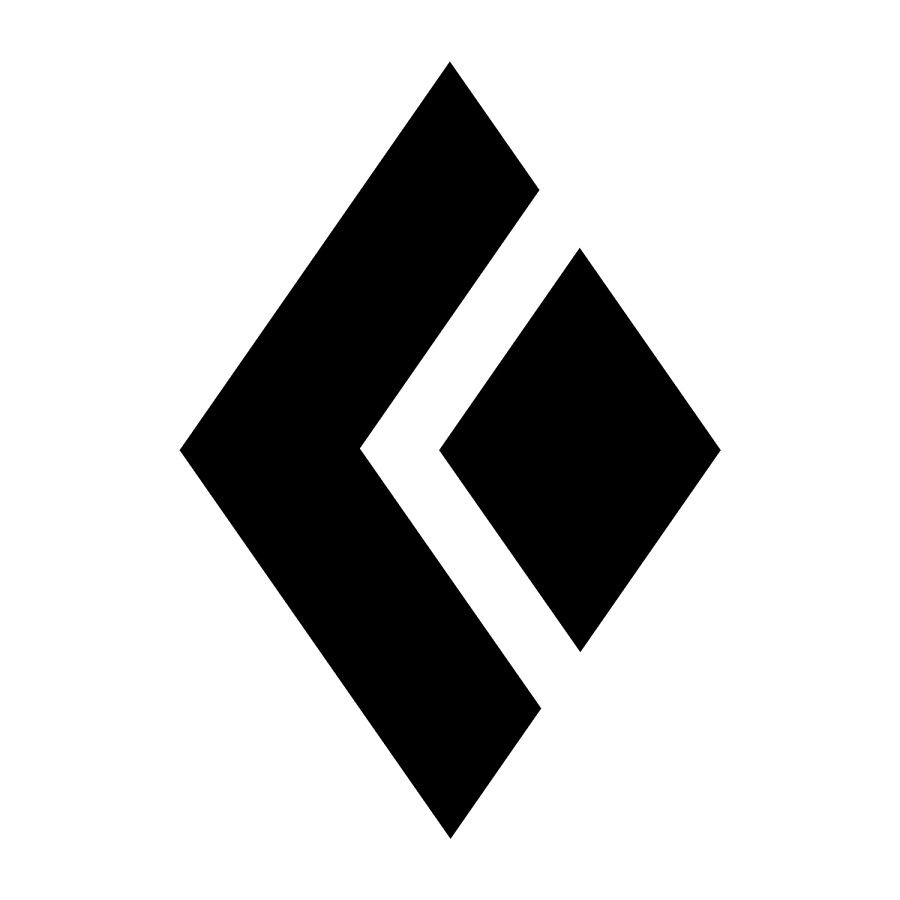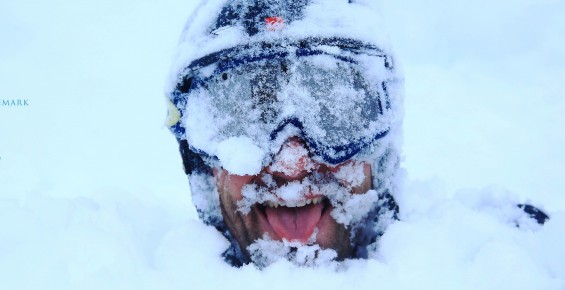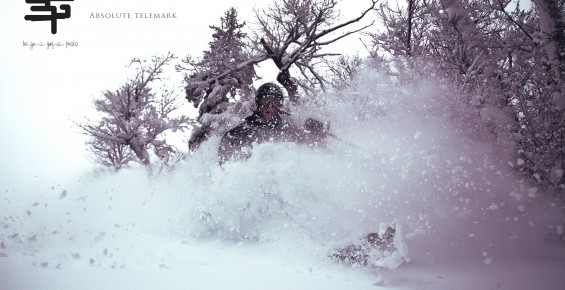This week, Absolute Telemark is really proud to present an interview with Paul Kimbrough who is considered by many as THE top big mountain telemarker of today. Whatever, one thing is sure: Paul is passionate about telemark and didn’t hesitate to answer our questions. Continue reading »
Gear talk: where to mount your binding
Through time, equipment as evolve a lot. From no cable pin binding (here), leather boots (here) and tall skinny skis (here) to rigid cable bindings (here), stiff plastic boots (here) and twice as wide skis (here).
A debate of great matter has emerged of this evolution. Where to mount a telemark binding? Continue reading »
Telemark market, survey
Hello,
Absolute Telemark is in the process of creating a new video tutorial, Please take a few minute to fill up this form. It takes about 6-7 minutes and it really helps.
Thanks very much, make sure to subscribe and never miss a post:
5 questions for 5 top telemarkers: Evans Parent
In the series of interviews Absolute Telemark asked the same 5 questions to 5 top telemark skiers.
Today, telemark skier is Evans Parent, ski bum, in a ski bum world. When ski bum life isn’t cool anymore, when sacrifices are made, year round for years to live the passion. When cold can of beans is luxury, when camping in cold damp is everyday consolation for powder turns around the world. When you see Evan ski resumé, you e end of tthink he’s so lucky to have skied so much, in so many places. When you read the story behind it, not everyone could do it, and very few would actually enjoy it. See his blog’s address at the end of this post. Continue reading »
5 questions for 5 top telemarkers: Tucker Vollbrecht
In the series of interviews Absolute Telemark asked the same 5 questions to 5 top telemark skiers.
Today’s telemark skier is Tucker Vollbrecht. Young and talented, Tucker is just like every kids out there, having fun. Oh and add dedication and talent. Continue reading »
5 questions for 5 top telemarkers: Nick Devore
Absolute telemark starts a new series of interview. 5 questions asked to 5 skiers who are influencing telemark in their own way.
Today we start with Nick Devore. He is one of the most influential telemark skier in the last decade. And still he is one of the most easy going, simple, humble person.
First day in the slope this year? 5 things to do
It’s time to finally get back to what we love best: telemark. You’ve train for three months to be ready for this?
This time of the year, we usually hit the local ski area for a few warm up runs. The snow quality and quantity might not be excellent but, hey, we go anyhow.
here’s my to do list for that big day:
1. A few days before, gather all equipment and inspect it carefully
I know you say: it was all good last year, why check it? First, make sure you find everything back.
A quick inspection will make you feel confident on the first run. Are your boots still comfortable? all buckles good? any mouse ate your Powerstrap (has happened to me!)? Are your bindings well screwed? (just tight them back with a screwdriver, if nothing moves, good, if it does, see your ski tech) Make sure the bindings are still adjusted perfect. Check your skins (clean, glue, straps…) Check that your adjustable poles still adjust (ask my friend Piteur, who came to me for is ski test for a job as ski patrol and could’t get is pole to move. I almost turned him back!) Check your helmet, your goggles, and of course check your skis (base, edges and chips, cracks…)
2. If you got new equipment, make sure everything is well adjusted to you.
Boots are the most important. Liners can be molded, Cuff alignment (canting angle) can be changed, forward lean is also available on certain models. More and more people buy their gear online, make sure you read your boot manual, search the web and ask questions.
Bindings need to be adjusted to your boots. This is much more simpler than on alpine gear. Again read manuals and search the web. Good tension on the cable is key to safety and performance.
If you need to install a binding, I strongly suggest caution on who you trust with this. Telemark bindings have much more stress on each screws than alpine binding (that’s why most brand have increased to 6 the total of screws on their binding). Also, on a lot of alpine gear, the binding are set on rail tracks which don’t require mounting. It seems fewer technicians are good at mounting bindings these days. You can mount bindings yourself, it isn’t so hard. But if the job is not 100% perfect, you might rip the binding from the ski somewhere through this season.
Check everything else, like jacket, underwear, socks, kneepads… Name it, if it’s new, make sure everything is dialed perfect.
3. the Big day, what to expect
Check weather report, check your ski area report, and check avalanche report. If backcountry is not your goal on the first day, make a habit to check avi reports anyway, it will give you an idea of the season’s coming. The start of the season can be crucial for snowpack stability trough out the season, just check the 2012-2012 Utah backcountry review.
4. There it is, your first run.
Make sure you warm up before going down on your skis. I know, it look silly, but I’ve never seen a pro skier not warm up before going down. On your first run, take it easy, and take an easy run for your level. Dial your balance, play around with different turn shape, telemark, alpine, stop on both side and so on. I always like to telemark fakie or backwards from the get go. This is something easy for me and it help me gain confidence. It is normal to feel a bit awkward at first but just enjoy the moment.
Telemark skiing, like any technical sport, is all in our head. And our head don’t remember the movement as good if it hasn’t practice for a few months…
5. Progress
Don’t wait for Christmas to get better. If you’ve train this fall, if you’ve check your gear, if the snow is good, if all is in place, do what is necessary to go towards your season’s goals right now
Here are my goals for the season:
- a 360° cab. (start and land backwards)
- Hand plant on our new wall at Le Massif
- Improve my carving (which I’ve negleted the last few years for tree skiing and bumps)
What are your goals on telemark this season?
video of telemark bumps
video of telemark tree skiing
Feels free to leave comments below…
Telemark turn, weak side
Like most everything, we have a strong side.
Snowboard is a good example. You have to choose between regular or goofy stance. In fact you don’t choose, it just happens to be that way.
Telemark turn is the same, remember when you started, you had a strong side. Maybe you don’t even remember. Now, mechanically, you may approach difficult situations on your strong side.
Like mentioned in the post: Flawless method to learn movement, practicing your weak side as you learn will only take a few more minutes and will just make it easier to learn on your good side. But what if you never learned something on your weak side and you got real good at it on your strong side. Can you still make it up for the time lost? Will it take incredible amount of time and energy the make it back? probably the answer to all these is YES.
Even if it will seem longer now, it’s still feasible and definitely worth the effort.
You know the saying:
If it ain’t broken don’t fix it. BS. This is a a loser’s perspective.
I think it’s more something like:
Be a visionary: Think outside the box.
Let’s take for example an advanced telemark skier that can ski any run on a resort. You sometime get air of jumps, landing telemark stance. Are you able to land both side equally well? Meaning: can you land with your left leg up front the same as you can your right? Probably not.
And it has a major impact on your ability to ski. Here’s how:
Going down a black diamond run with moguls is still hard but you manage. Things happen fast in moguls and you sometime lose control after a few turns. You probably haven’t notice, but I bet you don’t absorb moguls as good on one side. Why? Because it’s your weak side that has never practice absorbing as much as your good side. And landing jumps is a good way to learn just that.
This is just one example.
Practicing your weak side is not the end of the world, It’s just another perspective to keep in mind as you progress.
Don’t take your ability to ski for granted, don’t stop progressing, Don’t be lazy. And have fun on the mountains. That’s what telemark is all about.
Is telemark safe for your knees?
If I have knee problem, can I telemark ski ? or is telemark safe for your knees.
I’m not a doctor.
But after 10 years of mountain rescue as a ski patroller in 4 different resorts, I certainly can tell you that telemark skiers are less prone to injuries. Here‘s somewhat of a proof. Ok it’s ski stats from Scotland, but still. It clearly shows telemark is less prone to injuries than any other snowsports. Their is a new research you can participate here
Is it because of the telemark gear or because of the people’s behavior? Again nothing scientific here but I’d say a bit of both…
Questions I’m often asked:
1. I have knees problems, will I be able to telemark?
Real honest answer is that I know more people that have quit alpine skiing and are now telemark skiing because of knee problems that the opposite. Telemark builds muscles around the knee and stabilizes the articulation. Also, when starting telemark, you will be less aggressive (probably) than you where on your skis or board. If you’ve never downhill before, telemark is a great way to approach the mountain at a friendly pace.
2. Are telemark binding safe?
“That’s true, there’s no release…”
No binding system on the planet is 100% safe.
On most telemark bindings, there is no release. Old data found here tend to show that it’s safer with a telemark release binding than a non release binding. Although, equipment has continued to change a lot over the years, few brands have developed release bindings. The arrival of NTN bindings, a solid performing binding with release has not created a mass movement toward this product because of the release option. Don’t get me wrong, releasable binding is not bad, but it’s not a must.
The way your foot is attached and the way the binding moves, in most cases, a fall will not cause injury. And believe me, telemark skiers are reputed to fall a lot. If you want extra psychological support and have the release option, there’s a few out there, but other than the NTN, none are really on my list. Again, After years of telemark skiing and being around the community, I feel perfectly safe telemark skiing.
What is the most common injury when you alpine ski: knee ligaments (way up there) and is alpine skiing more prone to injuries, yes. So if you are alpine skiing and are concern about your knees, think about telemark as an option.
Is telemark skiing safe for your knees: definitely. Can accidents happen? Obviously every day, every where.
Go on and try it, telemark skiing is pure pleasure
Top 10 best telemark movies ever part 2
Here the second part of my top 10.
See part 1 in the blog section.
4- Steeve crazy. Total telemark4
For top 3 I couldn’t decide particular films. Instead, here are three productions I follow every year.








What others think about it